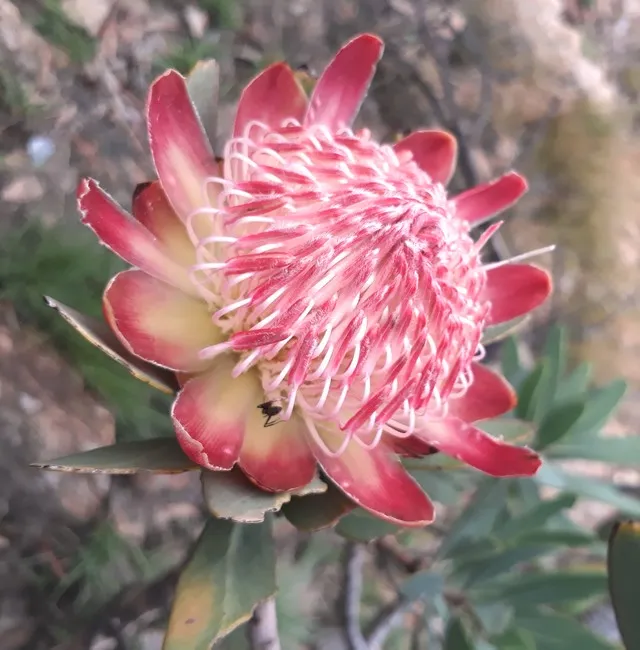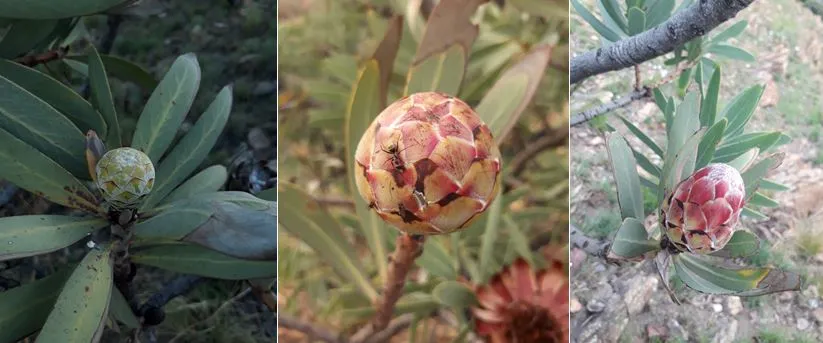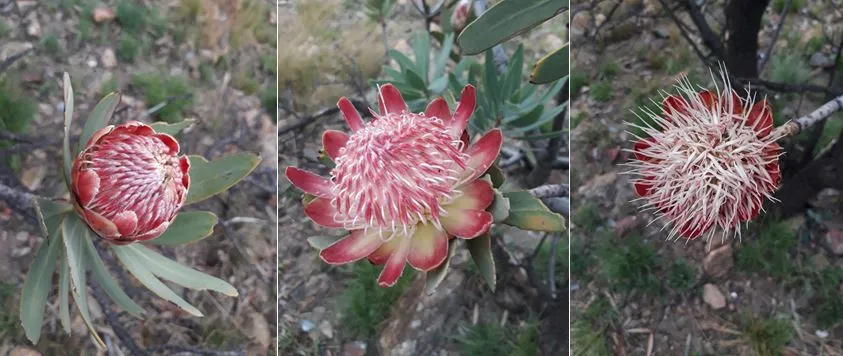
The proteas growing on the hill are Protea caffra, a very common protea found all over South Africa. I have been watching them carefully, photographing the buds as they develop but I found one that has already started flowering. Called Sugar Bush because the flowers are full of nectar and very attractive to birds, this flower has some large ant visitors instead: these ants are about 1.25 cm long.
Here are the flowers in various stages of development:

First the bud grows and starts developing colour and elongates as the stamens start becoming exposed

The bracts slowly open until finally, the stamens all collapse. The bracts slowly turn brown and can remain on the plant for a couple of years before they finally disintegrate.
Proteas thrive in poor, acidic, very well-drained soils and can be very difficult to grow in a garden because they need very well draining soil, very little water or fertiliser and will die if their roots are disturbed. They are plentiful on the hillside because the soil is comprised of shale and quartzite and proteas are often a very good indicator of the underlying geology of a particular place. They can withstand freezing temperatures and their corky bark is fire-proof. The seeds germinate only after fire and the bark of protea caffra is used medicinally to treat bleeding ulcers and diarrhoea.